Do You Know the Nine Great Water Features at The Met?
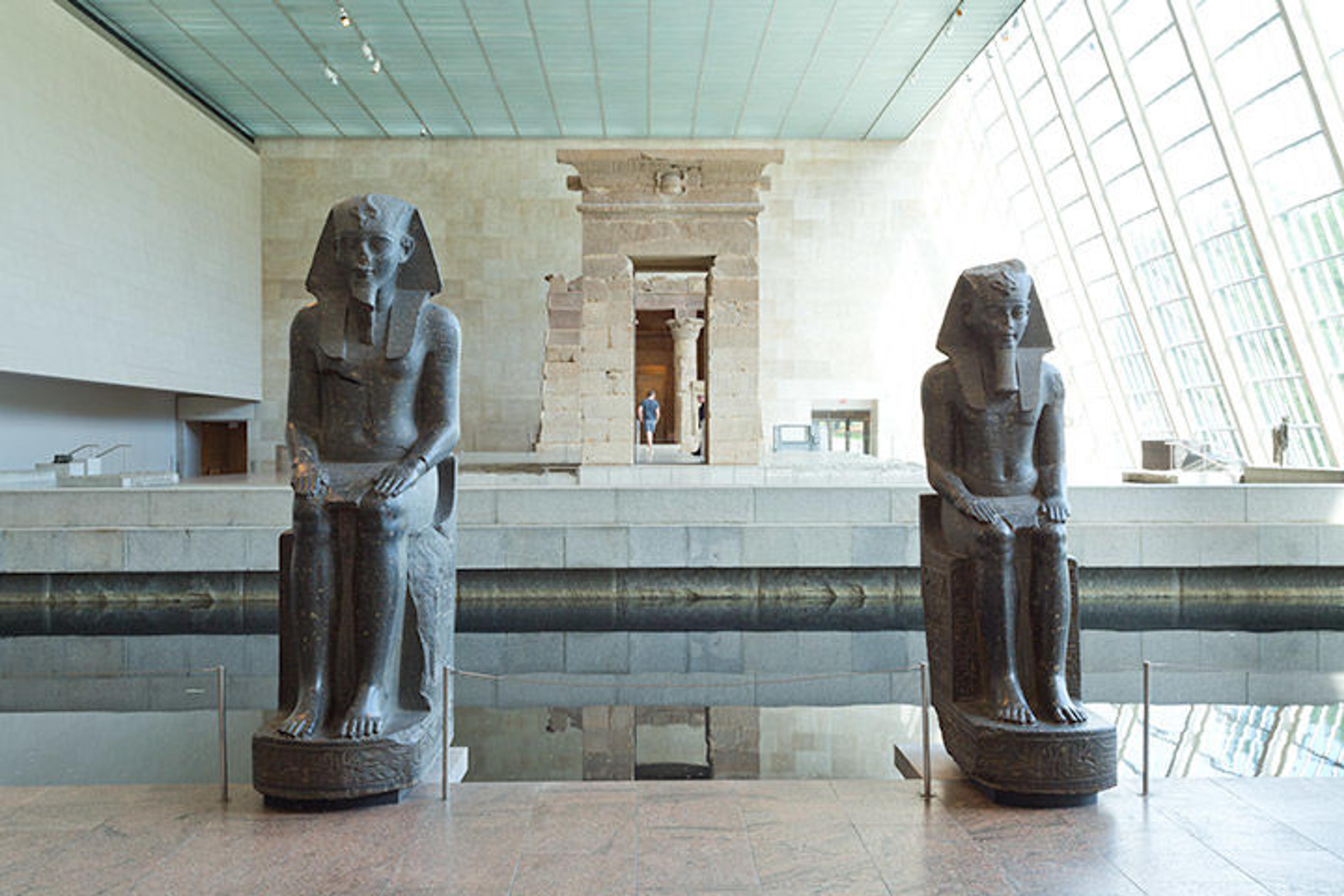
«With so much to see, you might not be aware of each unique water feature to be found around The Met Fifth Avenue. Besides the well-known reflecting pool at the Temple of Dendur, there are eight other water features. Some are quiet and still, while others activate the space with sound and movement. Have you seen all nine? Read on to navigate your way to each around the Museum.»
Stop 1: Gallery 131—The Temple of Dendur in The Sackler Wing
Water Feature: The Temple of Dendur Reflecting Pool
This year, The Met is celebrating the 50th anniversary of when the ancient Egyptian Temple of Dendur was gifted to the Museum by President Lyndon B. Johnson. Located in The Sackler Wing, the Temple of Dendur is situated next to a reflecting pool evoking its location along the western bank of the Nile River. For more on the history of the temple, see The Temple of Dendur: Celebrating 50 Years at The Met—a web feature that includes essays covering various aspects of the temple, archival photos, related digital content, and more.
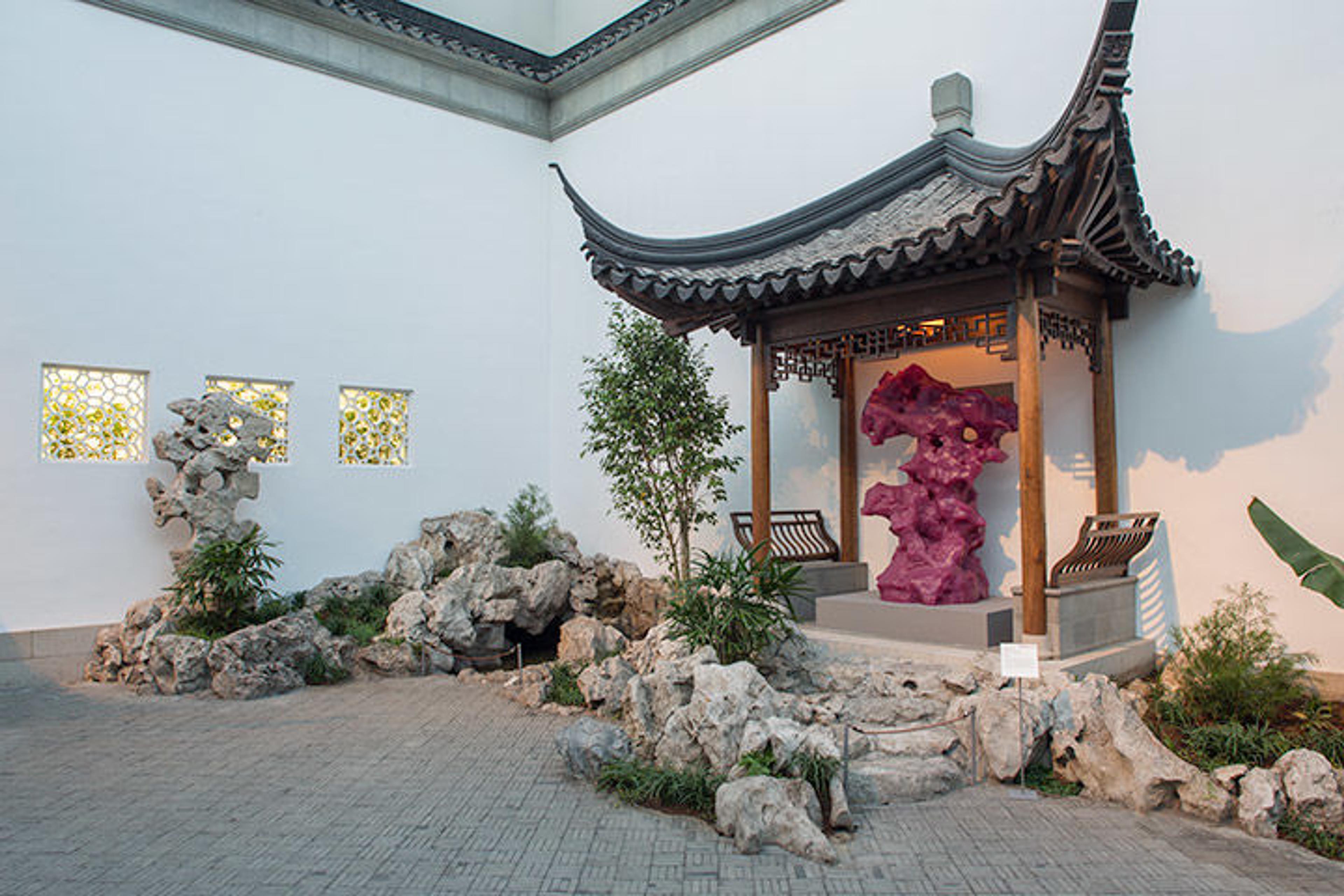
Stop 2: Gallery 217—The Astor Chinese Garden Court
Water Feature: Chinese Courtyard in the Style of the Ming Dynasty
The Astor Court, located one floor above the Temple of Dendur in the Asian Art galleries, is modeled on a 17th-century courtyard located in the Garden of the Master of the Fishing Nets in Suzhou. Opened in 1981, the courtyard and adjacent reception room were constructed over a period of six months by a team of twenty-six Chinese craftsmen employing traditional construction methods. In the northwest corner, to the left as you enter, is a small, inhabited koi pond. Families can find The Astor Court's pin on the #MetKids Map to learn more about the garden.

Stop 3: Gallery 229—Japanese Art
Water Feature: Isamu Noguchi's Water Stone
One of Isamu Noguchi's final works, Water Stone was made specifically for The Met to commemorate the opening of the Japanese galleries in 1987. Though you can hear water flowing when it's quiet, you'll have trouble discerning any ripples or other signs of motion. This is because the flat surface atop the carved stone, which weighs as much as a car, is aligned to the center of the earth and water is circulated gently, such that it flows as smoothly as possible.
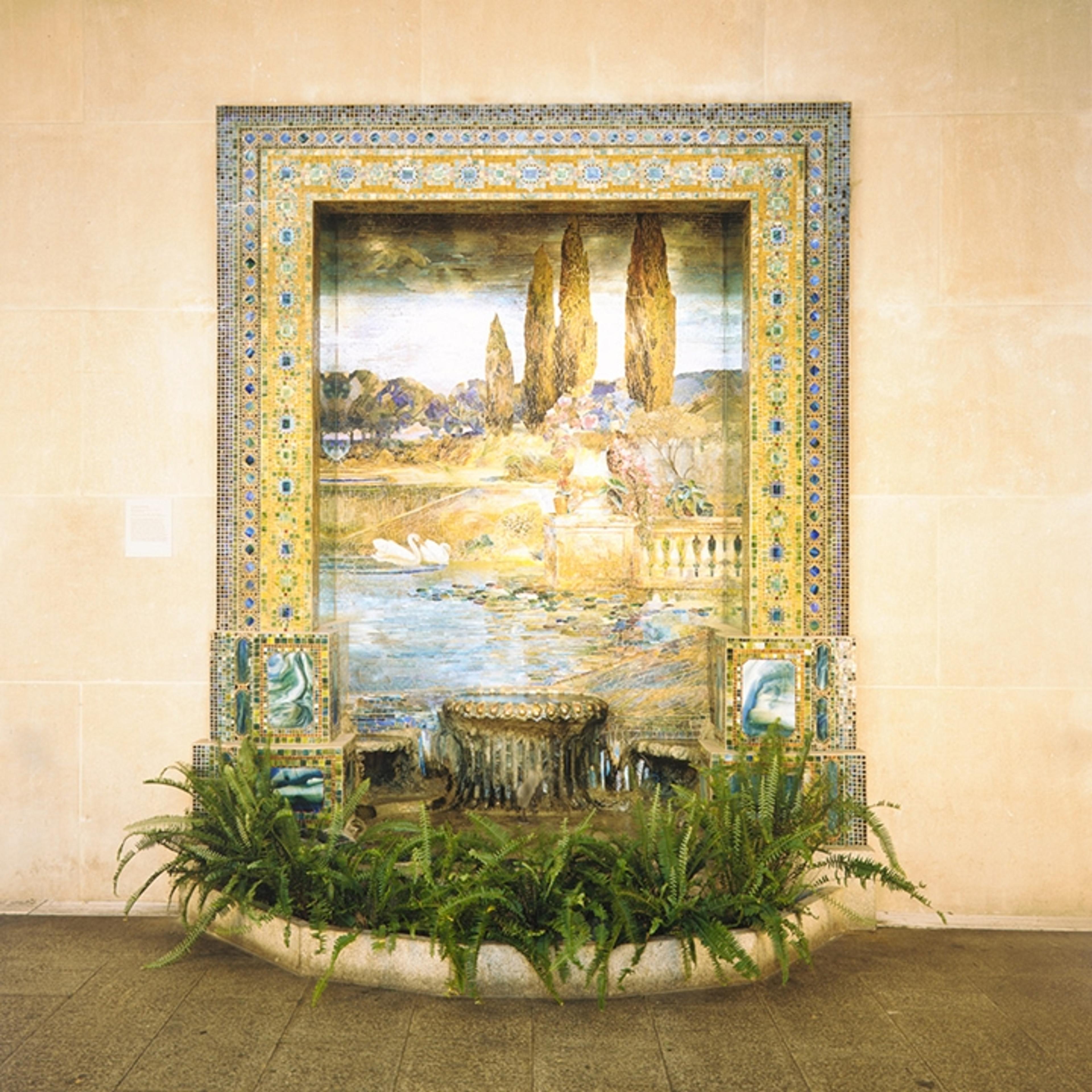
Stops 4 and 5: Gallery 700—The Charles Engelhard Court
Water Features: Louis Comfort Tiffany's Garden Landscape and Fountain and Janet Scudder's Frog Fountain
In The Charles Engelhard Court of The American Wing, which serves as the grand concourse for the Museum's collection of monumental American sculpture, are two fountains dating from the early 20th century. The sculptures adorning the larger fountain near the American Wing Café were cast by Janet Scudder in 1906 as models for attracting wealthy American clientele. On the south face of the courtyard is an ornate fountain, pictured above, designed by Louis Comfort Tiffany and inspired by Byzantine mosaics.
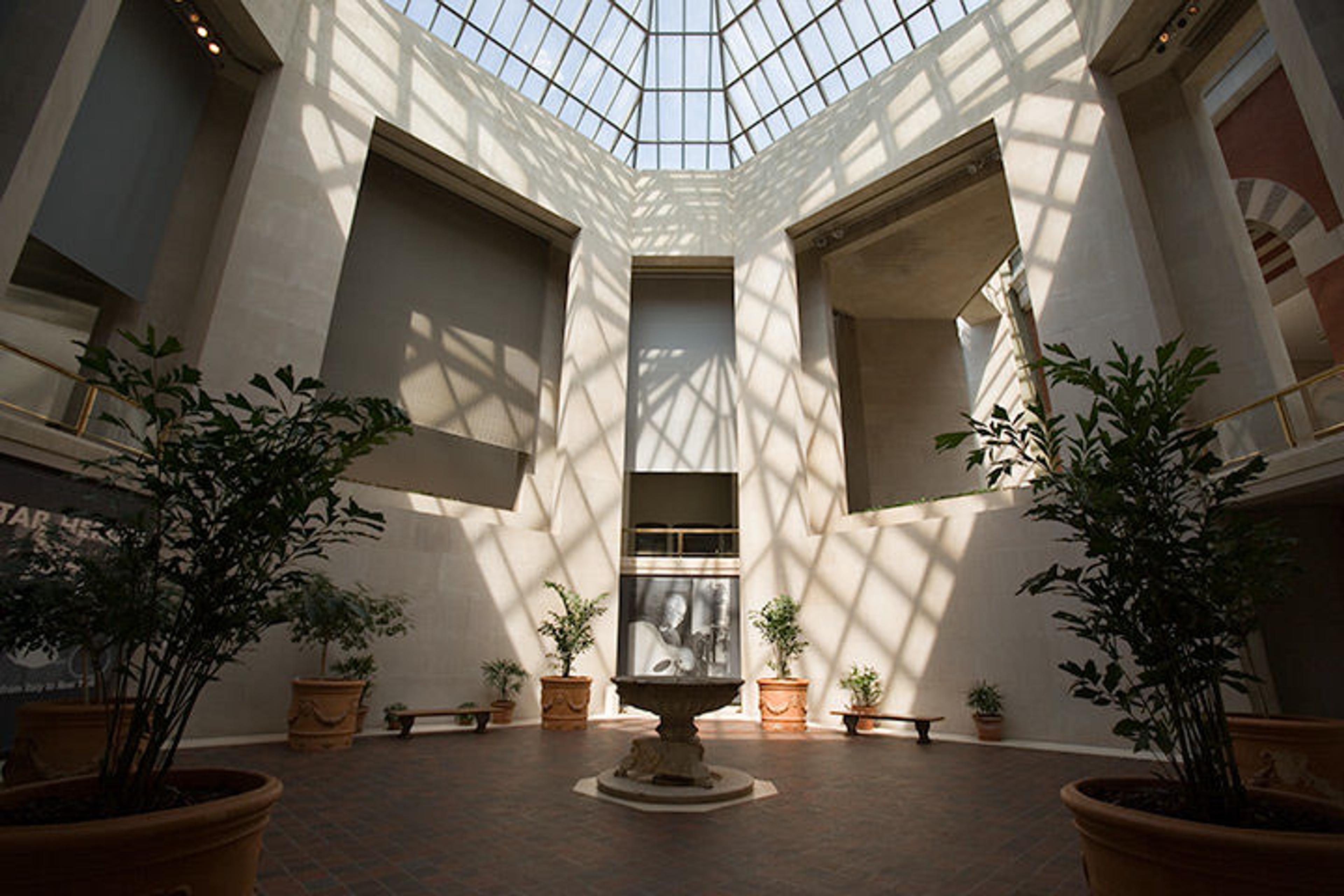
Stop 6: Gallery 963—The Robert Lehman Court
Water Feature: The Fountain at The Robert Lehman Court
At the western-most edge of the Museum are the galleries that house The Robert Lehman Collection, which comprises 2,600 works from 700 years of Western European art. On the ground level of the central atrium is a small, peaceful fountain surrounded by benches.

Stop 7: Gallery 162—Roman Sculpture Court
Water Feature: Black marble fountain
When the Greek and Roman Art galleries reopened in 2007 after a 15-year renovation, the Roman Sculpture Court included a black marble fountain designed to complement the Classical sculptures. This actually isn't the first water feature installed in this gallery: In the 1950s, this area of the Museum was home to a restaurant in which diners were arranged around a central pool evoking a Roman villa. Learn more about this restaurant and others at The Met by reading "Table d'hote and à la carte: The Museum's Restaurants" on the Digital Underground blog.
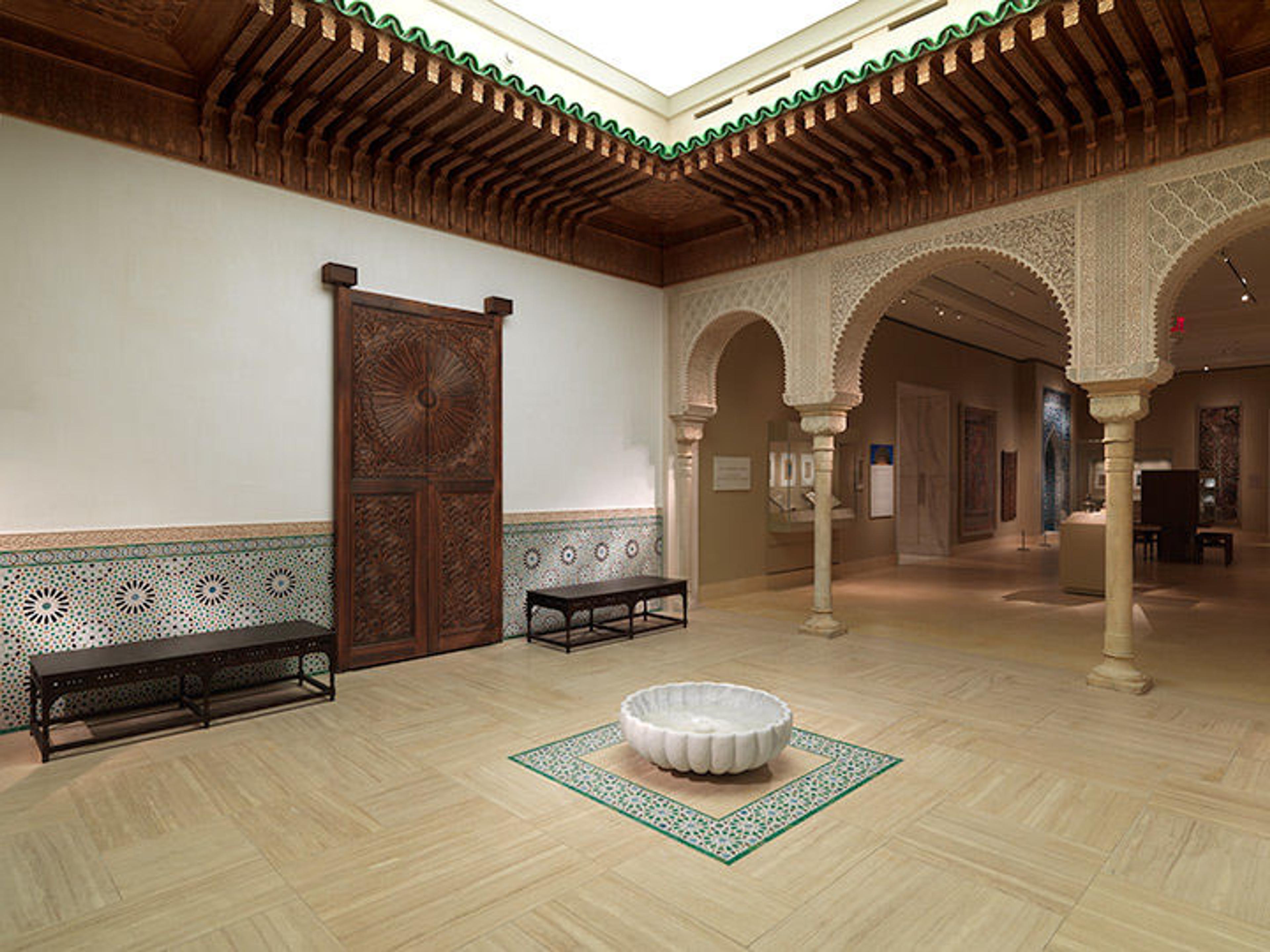
Stop 8: Gallery 456—The Patti Cadby Birch Court
Water Feature: Fountain at the Moroccan Court
Designed to evoke late medieval Morocco, the Patti Cadby Birch Court in the galleries of the Department of Islamic Art is flanked by Nasrid columns. Although constructed in 2011, the craftspeople employed 15th-century methods. Glazed tiles arranged in traditional patterns surround a bowl-shaped fountain. After your visit, watch a video on the construction of the gallery to learn more about its craftsmanship.
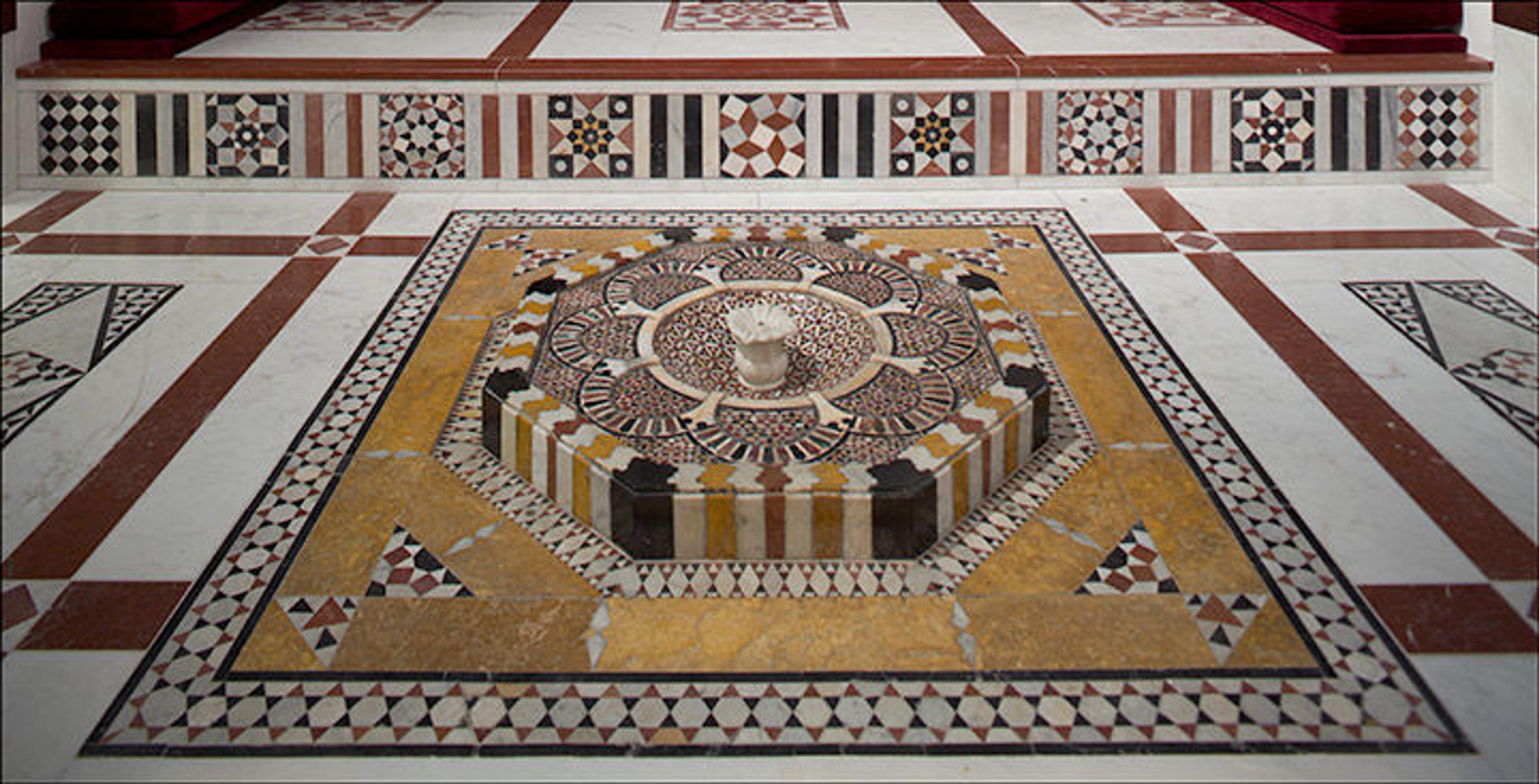
Stop 9: Gallery 461—The Damascus Room
Water Feature: Ataba fountain
The Damascus Room, a reception chamber recreated from an upper-class home in Damascus, is an important example of early 18th-century domestic Ottoman architecture. Central to the room is the ataba fountain. In a Heilbrunn Timeline of Art History essay on The Damascus Room, research associate Ellen Kenney wrote, "Almost all courtyards [of this style] included a fountain fed by the network of underground channels that had watered the city since antiquity."
Editor's note: This post was updated on August 1, 2017, to include a ninth water feature.
Related Links
The Temple of Dendur: Celebrating 50 Years at The Met
MetMedia: Building the Moroccan Court
See a list of articles published by the editorial team in the Digital Department at The Met.